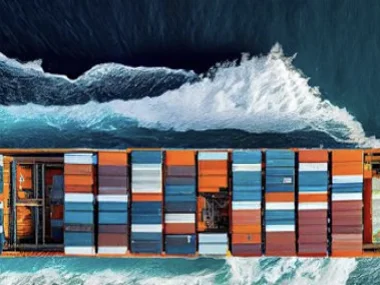High logistics costs “squeeze” the competitiveness of Vietnamese agricultural products in the world
High logistics costs and heavy dependence on foreign shipping companies make Vietnamese agricultural products for export, despite having many advantages, unable to compete with other countries, especially Thailand.
On June 23, the Vietnam Fruit and Vegetable Association (VINAFRUIT) and the Vietnam Logistics Service Association (VLA) held a seminar on "Enhancing the value of the agricultural export supply chain - effectively linking with the logistics system". The purpose is to have appropriate solutions and policies; towards sustainability between stages in the agricultural export supply chain.
At the seminar, Mr. Nguyen Thanh Binh - Chairman of VINAFRUIT - said that although Vietnamese fruits and vegetables have a large output of more than 34.7 million tons (of which, vegetables of all kinds are more than 16.1 million tons; fruits of all kinds are 18.6 million tons), the rate of products meeting export standards is low, and many types of products produced do not meet market demand. Infrastructure is both lacking and unsuitable, post-harvest losses are very high, about 30-35%.
As an agricultural export enterprise that has used air transport from the beginning, Mr. Nguyen Dinh Tung, director of T&T Vina Company, said that logistics accounts for more than 30% of the enterprise's revenue, not to mention the costs of importing fruits, irradiation... Therefore, the enterprise still has very little profit.
Mr. Tung cited the reality that many agricultural export enterprises depend on foreign airlines, the price increases and decreases depending on the airlines. As for transporting by rail, road, waterway... fruits are very susceptible to damage, the already low competitiveness becomes even lower.
"Therefore, I think we need to first focus on investing more heavily in transportation infrastructure to raw material areas so that farmers, cooperatives, and businesses have the opportunity to bring agricultural products to markets.
We need to plan and build agricultural logistics centers: with cold storage for classification, preservation, and preliminary processing to improve quality and stabilize prices," Mr. Tung proposed a solution.
Meanwhile, Ms. Nguyen Tu Uyen, director of CMU Logistics Company, also acknowledged the paradox of Vietnamese agricultural products being exported with many advantages but disadvantages, and less competitive with Thailand.
"Compared to other countries in the region, specifically Thailand, Vietnamese agricultural products face challenges because Thailand has many flights to the US, Europe, Australia, the Middle East... with regular frequency every day. Shipping lines have 70 destinations in Asia, India, the Middle East. Thailand's transportation prices to international markets are lower than those in Hanoi and Ho Chi Minh City by 1 - 1.2 USD/kg," Ms. Uyen cited.
Ms. Uyen also mentioned the concerns of export enterprises due to the lack of logistics facilities in raw material areas.
She pointed out: "We are in the lychee season, if we want to export to the US, we have to transport the lychees from Bac Giang province to Noi Bai airport, then to the airport in Ho Chi Minh City. Then we transport them to the packaging factory, continue to the irradiation factory, and then pull them back to the port to export. There are too many steps so the cost is very high, not to mention the quality is not as fresh as when picked from the garden".
Ms. Uyen proposed a solution to increase investment in logistics infrastructure for agricultural products, especially in concentrated and key agricultural areas, such as the Mekong Delta. Connecting waterways, roads, and railways to promote the overall strength of domestic logistics. Agricultural logistics enterprises need to build a supply chain service model from raw material areas, transportation, plant quarantine treatment, irradiation, customs documents, packaging, etc.



